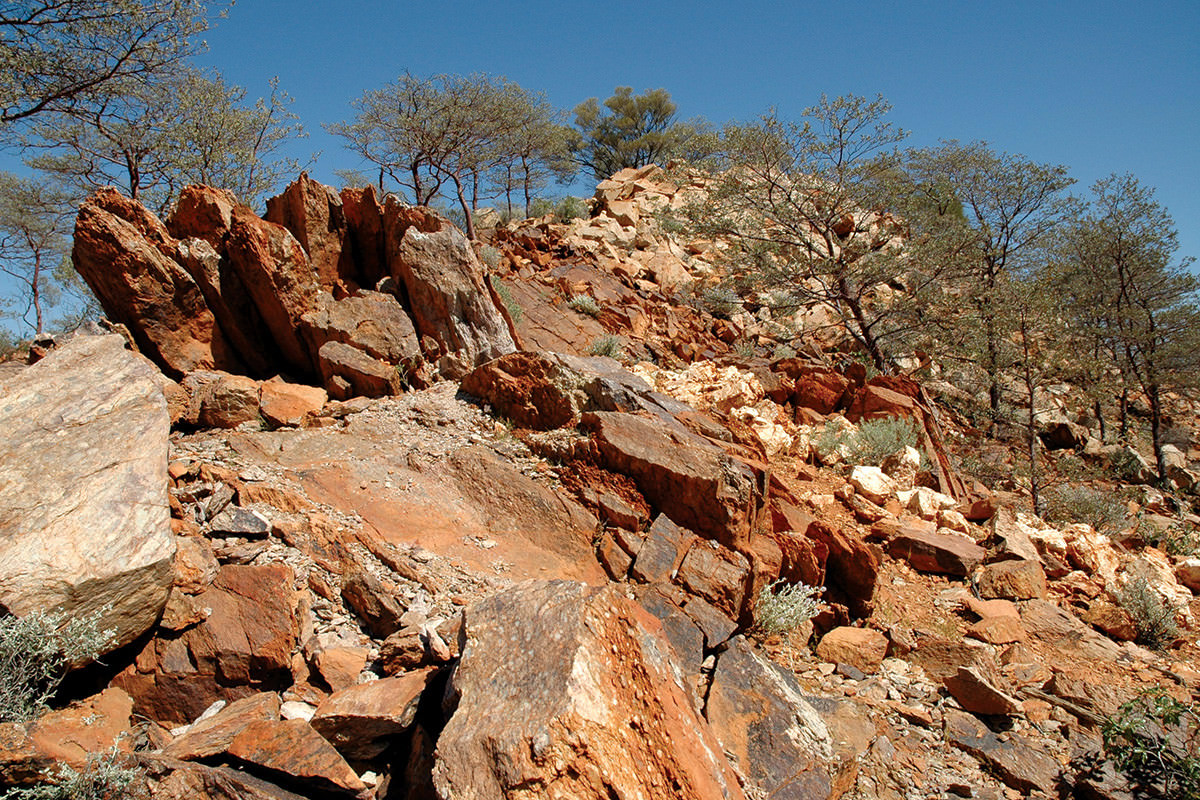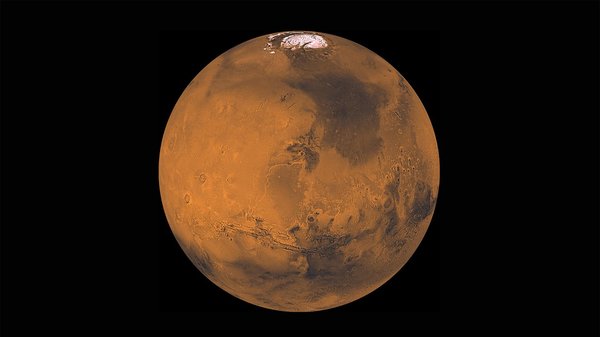In 2007, researchers discovered diamonds embedded in the Earth’s oldest known material: the Jack Hills zircons. These diamonds turned out to be human error. Nonetheless, they were a mistake that puzzled scientists on their controversial explanation, and highlighted the difficulties of definitively knowing what the early Earth was truly like.
The Hadean eon spans from Earth’s formation until about four billion years ago– in other words, when the Earth was still a baby. Geologists study remnant grains of a mineral called zircon as the Earth’s baby pictures. They play detective: much like spotting a signpost in the background of these baby pictures, inclusions of other minerals or isotopes within these grains tell us about the conditions of their creation.
Unfortunately, the album containing all of Earth’s baby pictures has been set on fire, shoved into a blender, and then thrown under the couch. This lack of material makes it rather difficult to understand what its infancy during the Hadean was truly like.
In 2007, a research published in the prominent academic journal Nature identified the inclusion of microscopic diamonds in the zircon grains from the Jack Hills, in the Wajarri lands of Western Australia. Out of 1000 zircons, 45 zircons dated between the ages of 3.06 to 4.25 billion years (Ga) contained such microdiamonds. This pushed back the age of the oldest diamond by very roughly a billion years, and made them the only ones ever found from the Hadean. The discovery was met with “excitement and skepticism”, according to Dr. Harrison, the author of Hadean Earth (2020).
The issue was that these microdiamonds were odd. They were inconsistent with inferences made with the geochemical data from previous studies about the conditions of the Hadean. The diamond type appeared most similar to ultra-high pressure (UHP) diamonds, whose formation conditions did not match the formation conditions of zircon and the assortment of other mineral inclusions within them.
Imagine seeing the Eiffel tower in Earth’s baby pictures, when, as far as you know, all the other pictures show that baby Earth never went to Paris, let alone Europe. This baby Earth grew up in the state of Nevada, USA. It goes against what you thought you did know, but you can’t deny it’s the Eiffel tower that you’re seeing. The big question then becomes: how can it be explained?
The question of contamination from diamond polishing paste used to prepare the zircons for analysis was considered, but ultimately dismissed. Amongst a few other arguments, the same spectroscopic method that identified the diamonds as UHP diamonds also distinguished them from synthetic diamonds used in polishing paste. Some diamonds also appeared completely enclosed within the zircon. Contamination was not the culprit.
The proposed hypothesis—due to the zircon age ranges in which the diamonds were found—was that the diamonds were formed during an unknown event that predated the oldest zircon (4.25 Ga), and then repeatedly incorporated due to an unknown process. A fair amount of unknowns, of which none of them are easy to answer.
Unfortunately, no other French baby pictures showed up to help out. The next handful of studies on the Jack Hills zircons failed to find further diamonds in their samples, and their results kept supporting Hadaen conditions that contradicted these UHP diamonds.
Seven years later, researchers from the University of California, Riverside, published a paper succinctly titled: “Diamonds in Earthʼs oldest zircons from Jack Hills conglomerate, Australia, are contamination”. The researchers had “abundant experience in the study of diamond inclusions in minerals”, and had been kindly provided original samples.
With better resolution in their imaging, they only found diamonds at the surface of the zircons, not enclosed, with no distinguishable microstructure between the two surfaces. Additionally, the original spectroscopic method used had later been indicated as inefficient for distinguishing between UHP and synthetic diamonds. With no alternative viable hypothesis, mystery solved, cased closed: the baby pictures were taken at the fake Eiffel tower in Las Vegas, Nevada.
The story of a scientific polishing accident may not seem like much, but it does reveal why the accidental diamonds found in the Jack Hills zircons were significantly considered in the first place. Why wasn’t contamination the obvious answer, despite the original researchers’ counter-evidence? The answer lies in the lack of other baby pictures, or– other zircons.
Rocks are composed of a vast array of minerals. Of these, zircon is a much appreciated mineral when it comes to figuring out ages on the older end of the geologic spectrum. This is because they have a few qualities that make them a geologist’s ideal match on Tinder: stable, available, date-able. The DILF of minerals, if you will.
Their mineral structure makes them hard and heat-resistant, and therefore relatively resistant to destruction. Additionally, their prevalence in rocks typical of continental crust make them an accessible candidate to study. Lastly, they often include trace elements such as uranium, whose rhythmic decay into lead provides a crucial analytical technique for approximating age. You should never ask a lady her age, but you should definitely ask that of a zircon.
What could be the maximum age of such a zircon? Let’s go back to the fun fact that the Earth is about 4.54 billion years old. To put that vast length of time into perspective: if we consider January 1st, 00:00:01, the moment Earth was created, then homo sapiens first showed up on December 31st, twenty-six minutes before New Year. Our industrial revolution made it just on time to party, with two seconds to spare.
Even on a geological time scale, the average age of our oceans is celebrating Christmas, and the average age of our continents is enjoying peak summer at the end of July. The oldest zircon was born near midnight on January 10th, and it’s from the Jack Hills.
It should come as no surprise that—as a society that loves setting world records—we’ve made a pretty good crack at finding the oldest material on Earth. Unfortunately for us, the Earth is also extremely tectonically active, and so there are a number of hazards this material has to dodge over the span of deep time: mountain building, erosion, plate subduction, etc. The older the material, the higher the probability of having met a destructive geologic event.
No rock (as far as we know) from the Hadean eon has survived the subsequent processes unscathed. The oldest rock is the Acasta Gneiss in northwestern Canada, just about hitting 4.03 Ga– but this age is much debated, with many runner ups. The difficulty is that these rocks have been extremely deformed over their lifetimes, irrevocably changing their original mineralogy. The lack of 4+ Ga rock leaves a pretty large knowledge gap in our geologic history. It’s why the period of time from Earth’s formation until 4.15 Ga is informally known as the Cryptic era.
The rocks in the Jack Hills are old, but not impressively so. Yet the zircons found in them are the resistant remains of much older, long eroded rocks, whose detritus eventually became incorporated into the Jack Hills. Their ages range from geologically young to the oldest material ever found, at about 4.40 Ga, with less controversial grains being dated consistently at 4.35 Ga.
Although only a very small percentage (~5%) of the Jack Hills zircons date from the Hadean eon, globally speaking zircons in this age range are much rarer. This makes the Jack Hills, in fact, abnormally abundant in old zircons. It’s also a location that’s been setting age records since the 1980s as new grains are found. The subsequent importance of the Jack Hills to geological research led to its permanent protection as an Australian National Heritage site in 2020.
Thanks to inclusions and other chemical information derived largely from these zircons, we know liquid water may have occurred during this time, and that there may have been some form of continental crust– possibly even plate tectonics. The Hadean Earth may not have been that broiling vat of magma that the word Hadean—derived from Hades, the Greek god of the underworld, and thus hellish conditions—implies.
What geochemists discover about these grains is influential in our understanding of the early Earth. The diamonds weren’t dismissed due to the scarcity of cross-references that could provide geochemical data from a different location. You only have one remaining album of baby pictures, so it’s difficult to develop a degree of certainty that baby Earth never went eurotripping to Paris.
The hypotheses scientists do develop about the Hadean Earth relies on these samples, as well as geophysical modelling, which relies in turn on the consistency of the laws of physics. An important concept in the birth of modern geology is that the present is the key to the past. This, however, doesn’t credit any background actors in the story. The original researchers were “open and friendly” and willing to share their data. Technological improvement is also critical; without it, the diamonds would neither have been proven nor disproven.
The Jack Hills diamonds are an exemplifying anecdote as to why good scientific practices involve being proved wrong… although more baby pictures sure might make it easier.





